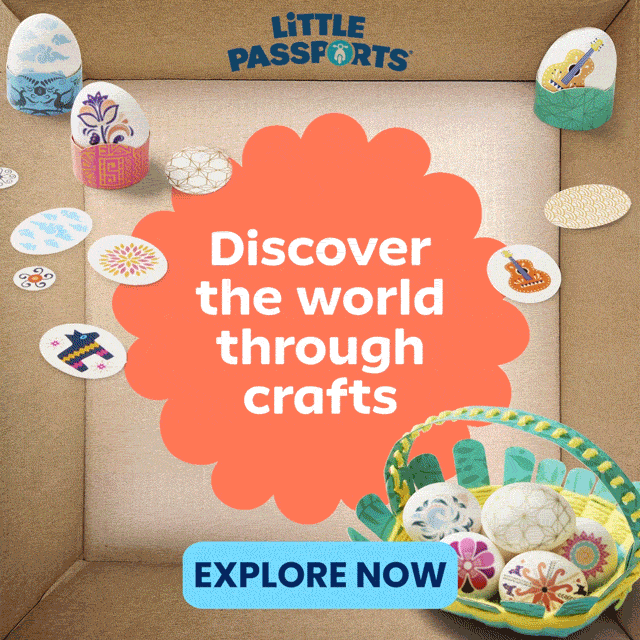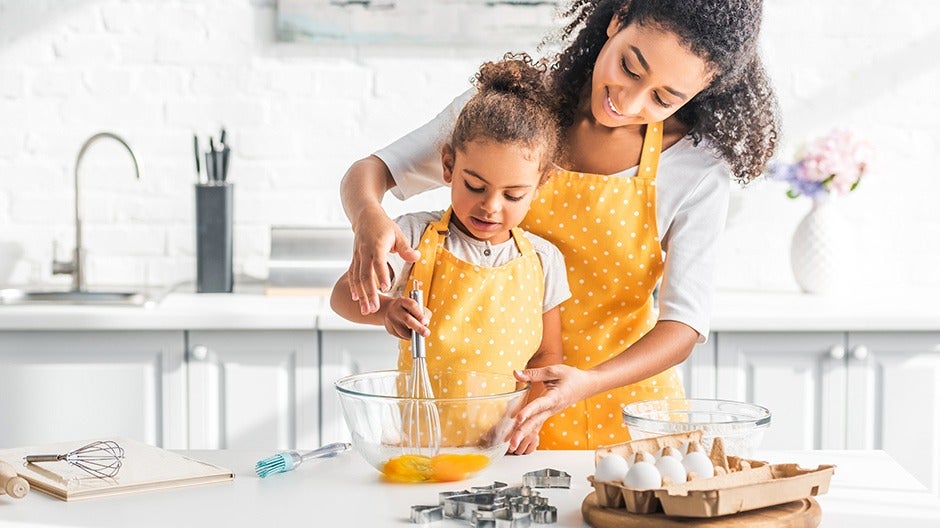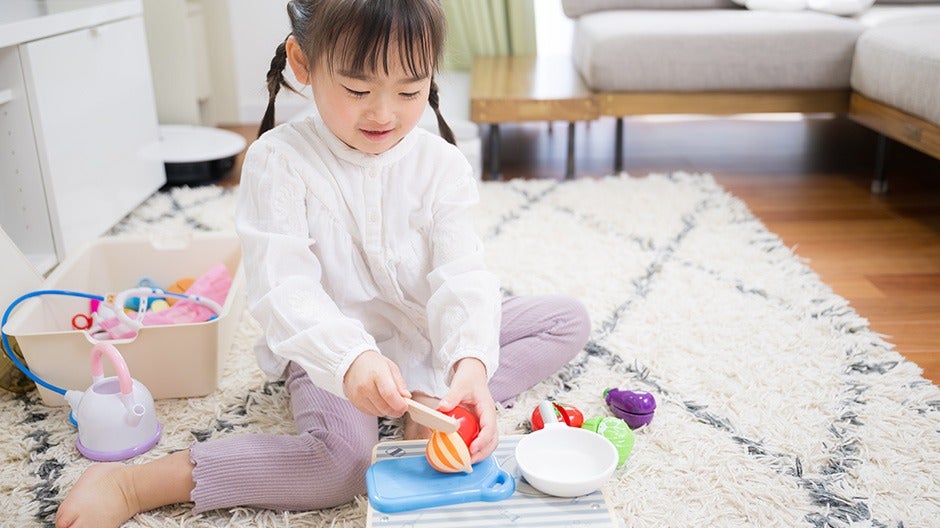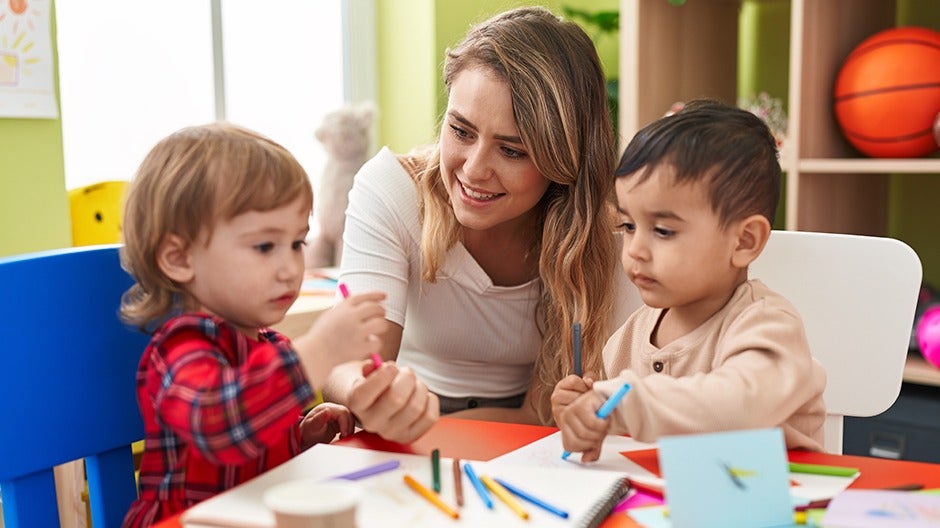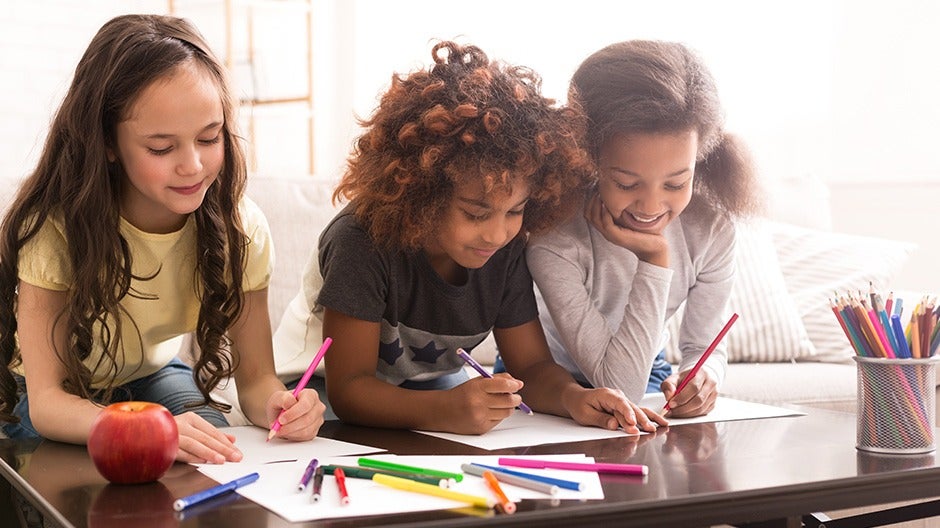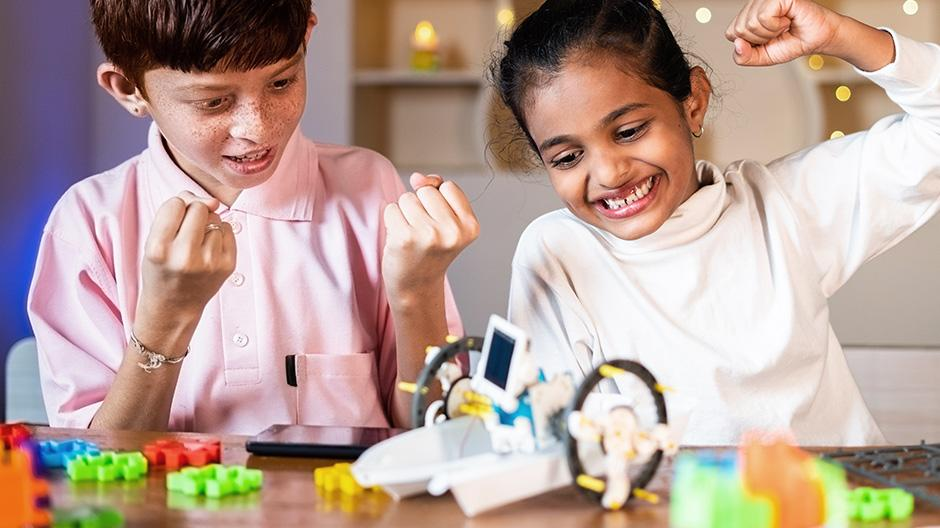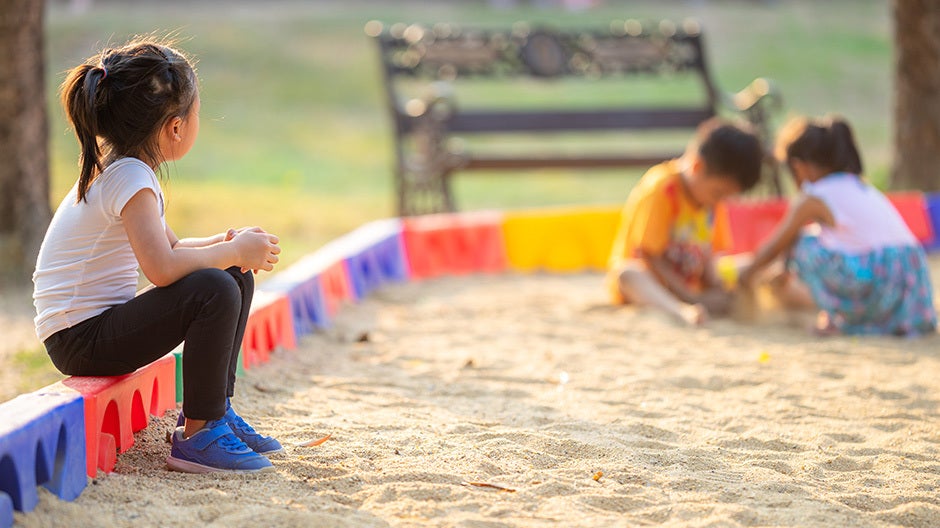Children often use their imagination to turn everyday objects into something extraordinary. With simple props, they can create unique worlds and dive into adventures of their own making. This type of make-believe play is essential for kids’ development.
To help you better understand the value of pretending, let’s look at what make-believe play is and how it benefits your child. You’ll also find tips for encouraging imaginative play.
Table Of Contents
- What Is Make-Believe Play?
- Your Child’s Imagination At Different Ages
- Benefits Of Make-Believe Play
- Tips To Encourage Imaginative Play
What Is Make-Believe Play?
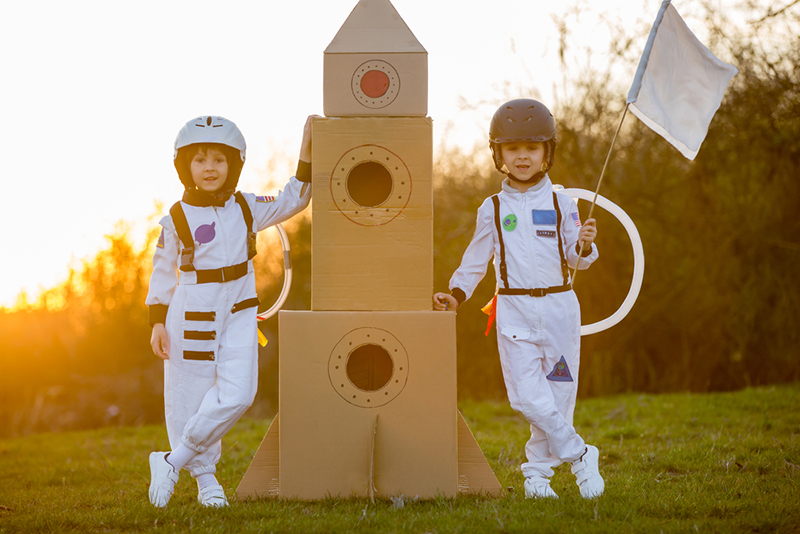
Make-believe play, also called pretend or imaginative play, is when children use their imaginations to create new worlds and adventures.
This could be as simple as playing house with a few dolls or using a box as a fort. The possibilities are endless!
Here are three common ways you’ll see your child pretend:
- Role-Playing: When kids take on a different persona and pretend to be someone besides themselves, they’re role-playing. They could be something real, like a doctor, or imaginative, like a dragon or unicorn.
- Object Substitution: This is when kids use one object as a different one. For example, kids might grab a rectangular block or a baby rattle instead of reaching for an actual phone to make a pretend call.
- World Creation: While some make-believe play involves the natural world and familiar objects, other times, kids use their imagination to create an entirely new world. This fantasy element of play allows them to try new things and experiment with ideas.
As you can see, make-believe play can be pretty complex, but it allows your child to pretend to be or do anything!
Your Child’s Imagination At Different Ages
Your child’s imagination grows and develops over time. For example, a baby can’t make believe the same way a preschooler can. To help you know what to expect at each age, here’s a quick look at how your child’s imagination develops over time.
The First Year
During the first year, babies engage in simple make-believe play. They’re starting to understand that objects have specific uses. For example, as they play, they might put a toy phone to their ear and babble, mimicking what they see their parents do.
The Toddler Years
In the toddler years, kids begin using their imagination more complexly. For example, they might start pretending to feed a doll or animal or engage in make-believe games with other children.
Toddlers also begin to understand that objects can have multiple uses. For instance, they might try using a block as a phone or a hairbrush. As a result, object substitution becomes more common at this age.
The Preschool Years
As kids enter preschool, their dramatic play becomes even more elaborate. They might have extended conversations with their toys, use props to create a scene, or play dress up. For example, a child might set up a fake store and sell goods to their parents.
Additionally, preschoolers understand that they can use objects for something other than their intended purpose. They also begin experimenting with imaginary things or playmates.
The Elementary School Years
When kids grow and enter elementary school and beyond, their ability to make-believe develops further. They might work with friends to create a new world, invent a secret language, or write stories about their made-up characters and their adventures.
Benefits Of Make-Believe Play
Make-believe play has many benefits for children. Here are a few reasons this type of play is good for them.
Encourages Social-Emotional Development
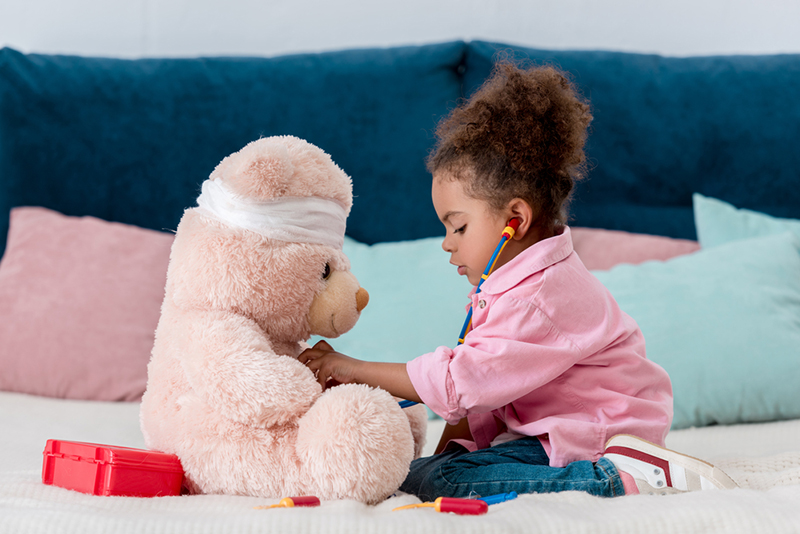
Make-believe play allows your child to practice critical social skills, such as sharing, turn-taking, and communication. It also enables them to express their emotions in a safe and controlled environment.
As they play, your child can develop empathy and understand the perspectives of others. For example, if they pretend to be a doctor, they must consider how their patients feel and ensure they stay calm and collected while examining the injury.
Boosts Creativity
Make-believe play is a great way for kids to be creative. As we mentioned above, it allows them to experiment with different ideas and try new things.
And since they’re pretending, your child has the freedom to make mistakes without worrying about the consequences. This can help them feel more confident in their creative ideas in other areas of their life.
Enhances Communication Skills
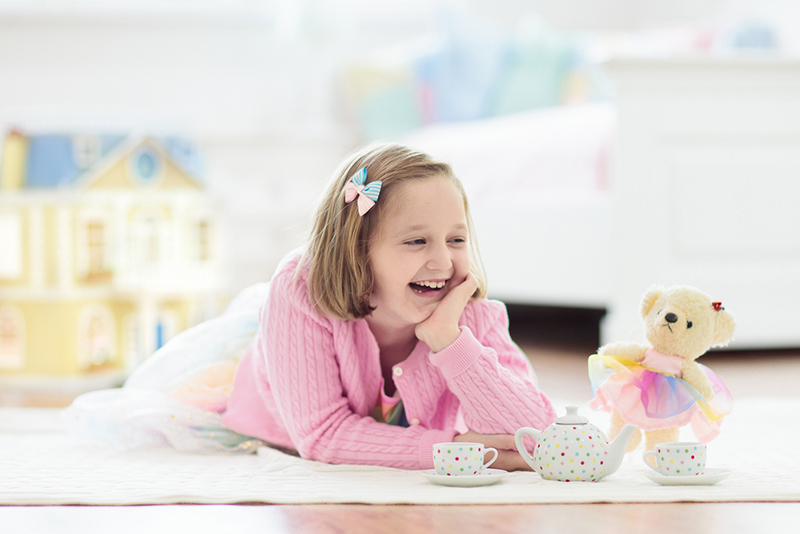
Pretend play gives your child a chance to practice communication skills. As they play with others, they’ll need to use their words to explain their ideas. Negotiation also happens as they try to devise rules everyone can agree to follow.
Additionally, your child can communicate with their toys even if they’re playing alone using sounds, words, or non-verbal communication, like facial expressions.
Develops Fine And Gross Motor Skills
While your child plays, they’ll use their muscles and develop their motor skills. For example, when they dress a doll or stack up blocks to make a castle, they work on fine motor skills and strengthen their fingers.
Kids also build their gross motor skills while playing. For example, they use large muscle groups if they run around or jump. Even simple movements, such as clapping or waving, help them develop coordination.
Provides Opportunities For Critical Thinking
Make-believe play helps kids learn to think outside of the box. They practice critical thinking by evaluating different options and experimenting with new ideas.
This type of play also allows kids to solve problems on their own. For example, if their block castle keeps toppling over before the princess gets inside, they’ll need to figure out how to fix it. As they find solutions, they develop essential problem-solving skills.
Tips To Encourage Imaginative Play
While many children naturally engage in make-believe play on their own, there are some things you can do to encourage it.
Start Off Playing Together
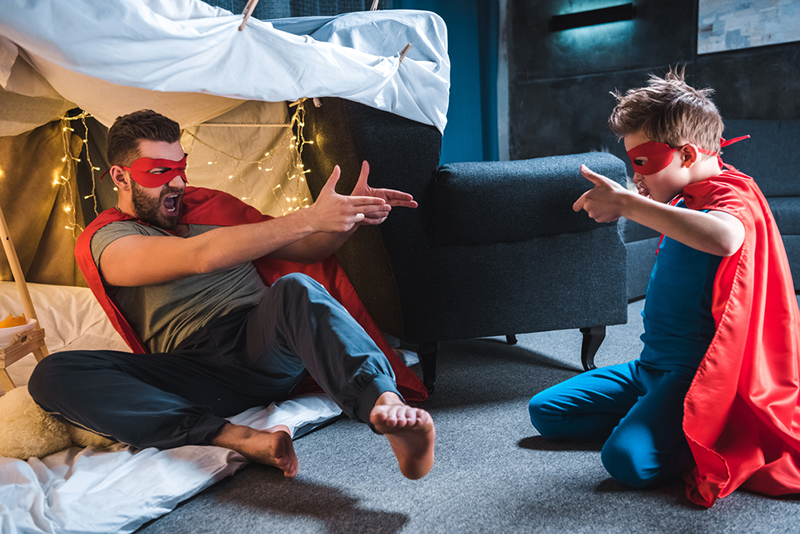
You can help your child get their imagination going by playing with them for a few minutes. Set them up with a simple scenario and a few props, such as a block city or a tea party. Costumes are great, too, and they don’t have to be elaborate. Anything you have at home will work.
Once you have your props and costumes all set, it’s time to play together. While you can sometimes step back at this point depending on the activity, continuing to play with your child offers a great bonding opportunity and is a lot of fun!
Let Your Child Take The Lead
When your child is ready, let them be in charge of playing. This means following their lead, even if it doesn’t make sense to you.
If they want to pretend that a block is a monster, go with it! If they want to serve you tea in a tiny toy cup, that’s fine, too. It’s their playtime, so let them decide what happens.
Tell Stories Together
Encourage your child’s imagination by telling stories together. Make up a story about anything, whether it’s going on a safari or visiting outer space.
As you tell the story, involve your child as much as possible. Let them choose what happens next or what their character does. This will help them feel more engaged and allows them to create make-believe scenarios.
Provide Creativity-Enhancing Props
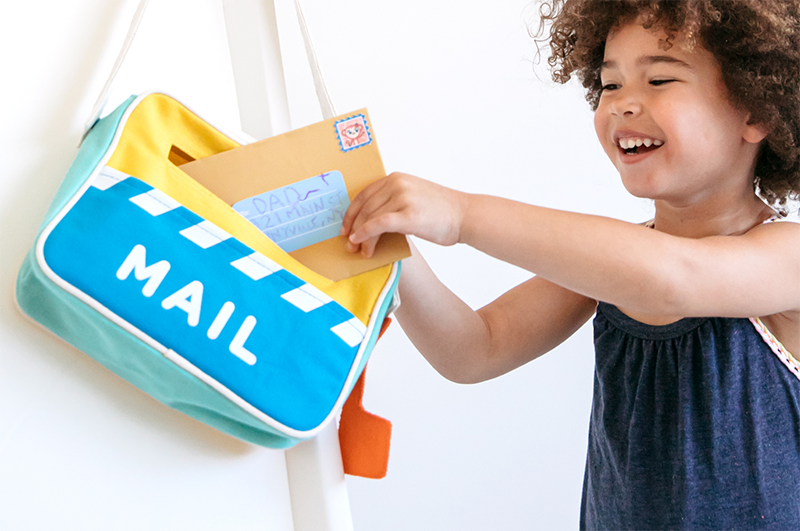
To help your child’s imagination run wild, provide props they can use in various ways. For example, stuffed animals can become babies, patients, or tea-party guests.
Paintbrushes, crayons, and other art supplies are also great for imaginative play. Your child can use them to draw pictures, write stories, or even create their own props.
But don’t feel like you need to buy a lot of materials for your child to be creative. An empty box can become a boat, a car, or a fort. And a pile of blankets can become a cave, a superhero lair, or a princess castle.
If you want to purchase a few things to help encourage this type of play, look for open-ended toys. These toys can spark your child’s imagination as they play.
For example, our HOMER Mail Adventure Learn and Play Kit comes with materials your child can use to pretend they’re running a post office. They can write letters to other family members and deliver them around the home, pretending to be a mail carrier.
Let Your Child To Explore Their Surroundings
One final way to encourage make-believe play is to let your child explore their surroundings. This means getting them outside as much as possible and letting them experience different places and things.
Visit the beach, go for a hike, or explore a park. Point out things that might be fun to use in a game of pretend. For example, you might say, “Look at all these rocks! We could make-believe we’re scientists searching for a rock that has magical powers.”
Exposing your child to new places and experiences will help them develop new ideas for make-believe play.
Anything Is Possible When You Play Pretend!
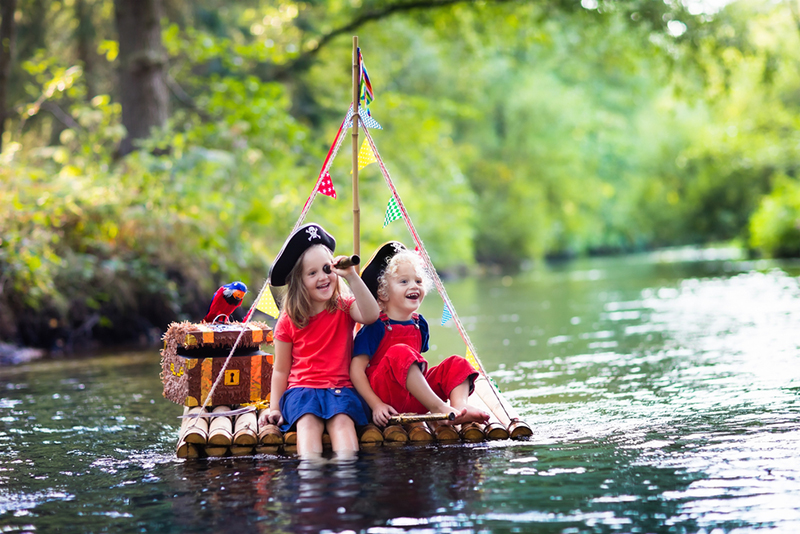
Make-believe play is an integral part of childhood development. And at HOMER, we encourage this type of play through our educational apps and other products.
Let your young child explore their feelings and boost their creativity as they interact with our Learn With Sesame Street app. Then, as they age, they’ll appreciate the ability to create scenes from their imagination in our Learn & Grow app.
No matter how you encourage it, make-believe play is an excellent way for your child to build essential skills and have fun at the same time!

